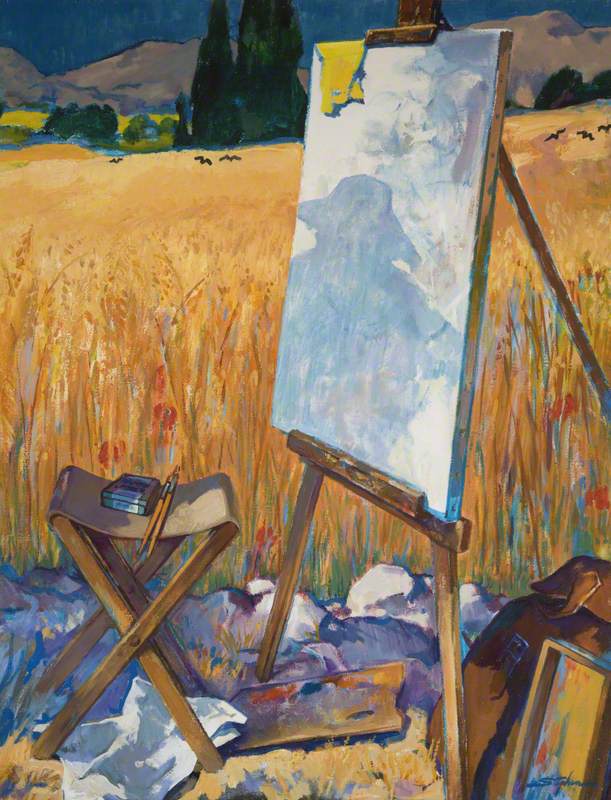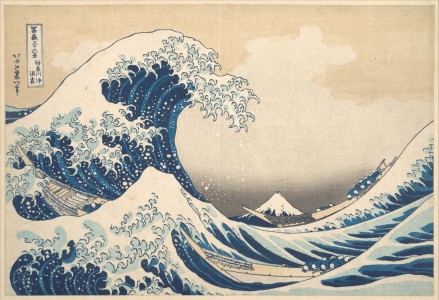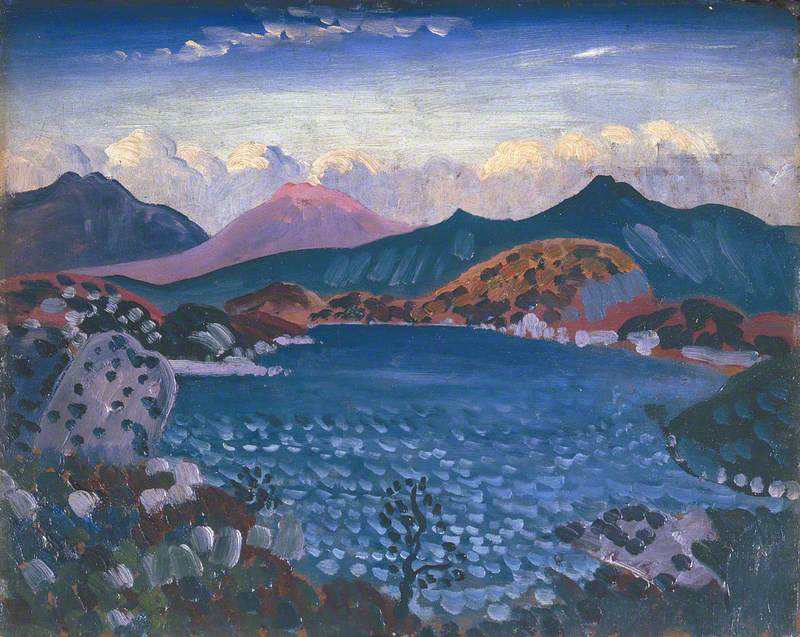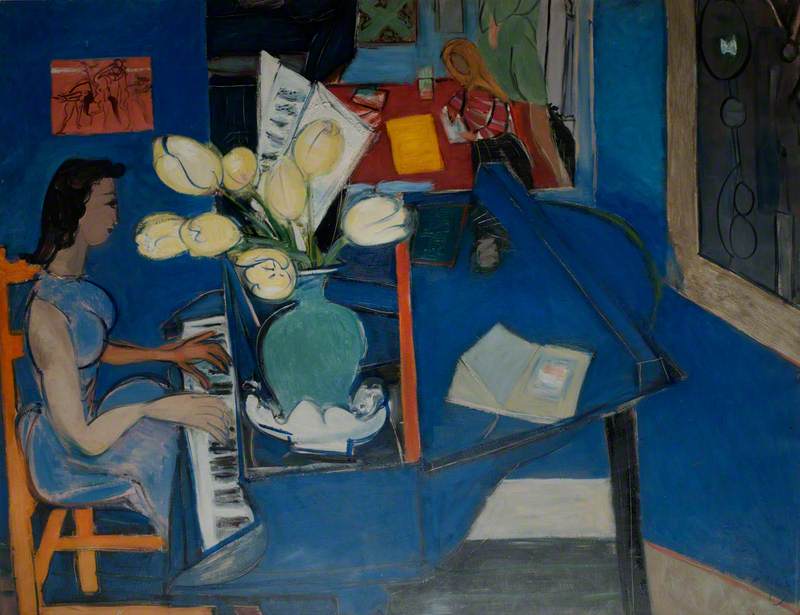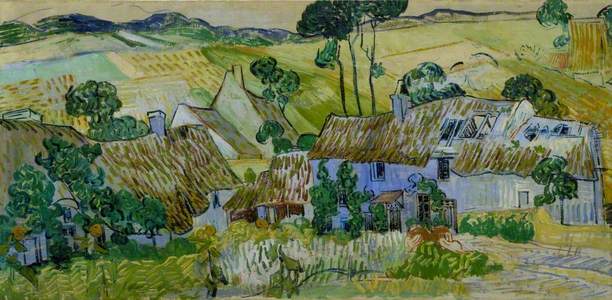A new exhibition, 'Art of the Selfie', sees one of Vincent van Gogh's self-portraits come to Wales for the first time. The painting, on loan from Musée d'Orsay will be shown at National Museum Cardiff alongside other self-portraits from the national art collection.
But there's another Van Gogh in Wales' national collection – a powerful, emotionally charged landscape that reveals as much about the artist's inner world as any of his self-portraits.
This is the incredible Rain, Auvers, painted just days before the artist's death.
The painting shows a rain-drenched view of wheatfields in the area around Auvers-sur-Oise on the outskirts of Paris. In the foreground, pale yellow wheatfields quiver and pulsate. The paint is rippling, thick. Behind the fields houses are tucked into a valley, surrounded by poplar trees in shades of violet and blue. Near the centre, crows fly low over the fields. Rain pelts down on them in heavy, relentless streaks.
The rain is perhaps the most striking features of the painting, scored into the paint in forceful diagonal strokes. Van Gogh had been inspired by the depiction of rain a Japanese ukiyo-e woodcut, Sudden Evening Shower on the Great Bridge near Atake by Utagawa Hiroshige.
Like many Western artists of this time, Van Gogh was heavily influenced by Japanese prints, admiring their bright colours, flattened forms, asymmetric compositions and devotion to scenes of everyday life. He painted his own version of Sudden Evening Shower in 1887.
Bridge in the Rain (after Hiroshige)
1887, oil on canvas, by Vincent van Gogh (1853–1890) 
Rain, Auvers was found in Van Gogh's studio by his brother Theo, after the artist's death. It was freshly painted – one of a series that Van Gogh was working on in his final weeks.
He described these new works in a letter written to Theo around 10th July 1890: 'they're immense stretches of wheatfields under turbulent skies, and I made a point of trying to express sadness, extreme loneliness… these canvases will tell you what I can't say in words, what I consider healthy and fortifying about the countryside.'
A few weeks later, he went out into one of the fields and shot himself, dying from his wounds on 29th July 1890.
In Van Gogh's Shadow, Dan Stephen imagines Van Gogh painting the wheatfields. The artist is reduced to a silvery shadow cast on the canvas, already slipping away.
In 1920 – 30 years after Van Gogh's death – Rain, Auvers was bought by Welsh art collector Gwendoline Davies, in Paris. This was a remarkable purchase for the time. Van Gogh's reputation had not at that point reached the stellar heights of today. In fact, his work had been publicly ridiculed at the first Post-Impressionist exhibition in London in 1910. Gwendoline was among a small group of collectors in Britain – and the only woman – who had access to, a desire and the means to invest in his works at this time.
Gwendoline and her sister Margaret, also a collector, had inherited a fortune from their industrialist grandfather, David Davies Llandinam and were among the richest women in Britain. Aware that their great fortune had been built on the blood, tears and sacrifice of industrial workers in south Wales, they were committed to giving back in their own way. They believed in the social, healing and educational power of the arts, and together had been forming a collection to gift to the people of Wales.
Gwendoline bought Rain, Auvers four years before National Gallery London bought the iconic Sunflowers, supported by the Courtauld Fund. Margaret painted her own version of Sunflowers, perhaps as homage to the artist. But while Samuel Courtauld's impact on the UK's public art collections is widely celebrated, the Davies sisters are often overlooked – probably because they were women, and Welsh.
By the time Gwendoline bought Rain, Auvers, her collecting activity was starting to slow down. After witnessing the ravages of war, and post-war economic uncertainty, she could no longer face spending so much on art. Instead she turned her attention to her new home, Gregynog, which the sisters bought in 1919 with the plan to develop it into an arts and craft centre, and a place for ex-soldiers to recuperate in the peaceful mid-Wales countryside.
For years Rain, Auvers hung in Gregynog's music room, until it was eventually bequeathed by Gwendoline to the national museum in 1954. It was one of the first paintings by Van Gogh to enter any British collection, and has inspired countless artists and visitors to Wales since.
Tate's Farms near Auvers was acquired earlier, in 1933. This unfinished painting focuses on rustic farmhouses in a patchwork of verdant fields, and the undulating shapes of thatched roofs riddled with holes. Like Rain, Auvers, this was also painted in the weeks leading up to Van Gogh's death. Both share a distinctive 'double-square' format: twice as wide as they are high.
Morning on the Oise, Auvers
1859
Charles-François Daubigny (1817–1878) 
This double-square format was probably inspired by the work of Daubigny, a French artist who built a studio-home in Auvers-sur-Oise in 1861. The area became a beacon for artists in the late nineteenth century, including Corot, Pissarro and Cézanne, whose Near Auvers-sur-Oise was stolen from the Ashmolean in 2000.
But this artistic legacy was not the only reason behind Van Gogh's move to Auvers. He had just been released from a psychiatric hospital in Saint-Rémy-en-Provence, where he had voluntarily admitted himself in 1889 after attempting to cut off his own ear. He moved to be closer to his brother Theo, and to Dr Gachet, an artist, friend and homoeopathic doctor.
Self-Portrait with Bandaged Ear
1889
Vincent van Gogh (1853–1890) 
An interesting comparison can be made between Van Gogh and Welsh visionary artist Edgar Herbert Thomas. As art historian Peter Lord explains, Thomas was a contemporary of Van Gogh at the Académie des Beaux-Arts in Antwerp, and also experienced later episodes of mental ill health leading to time in an asylum. On the surface, Thomas's strange translucent paintings suffused with milky lights and mossy greens appear to have little in common with Van Gogh's vigorous, bright paintings. But both use the external world to explore shifting, subjective emotional truths.
Van Gogh's time in Auvers was a frenetic, turbulent period. He continued to struggle with mental ill health, and we may see this struggle encapsulated in Rain, Auvers. The painting bristles with a pent-up energy, at once forceful and uncertain, hopeful and despondent – charged with emotions that are easy to feel, but difficult to categorise: a physical embodiment of the artist's shifting, conflicting, psychological states in the days before his death.
Steph Roberts, Art UK Commissioning Editor – Wales
A major exhibition at Amgueddfa Cymru, 'Industry to Impressionism' in 2007 revealed extensive new research about the Davies sisters' collections, on which this article has been based. A recent exhibition at Musee d'Orsay, 'Van Gogh in Auvers-sur-Oise' has provided an excellent overview of Van Gogh's final few months.
This content was supported by Welsh Government funding
Further reading
Oliver Fairclough (ed.), Things of Beauty: What Two Sisters did for Wales, National Museum Wales, 2007
Ann Sumner, Colour and Light: Fifty Impressionist and Post-Impressionist Works at the National Museum of Wales, 2005
Martin Bailey, Van Gogh and Britain: pioneer collectors, National Galleries of Scotland, 2006
Van Gogh Museum, Amsterdam, 'Vincent van Gogh's Death'

